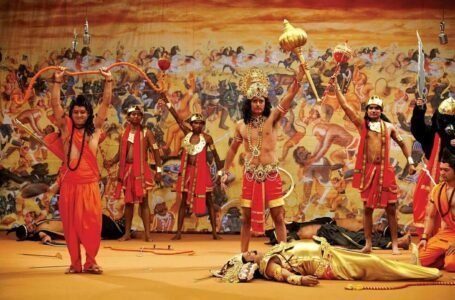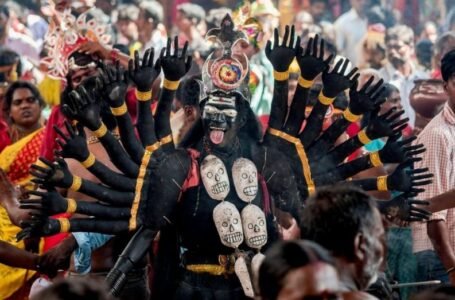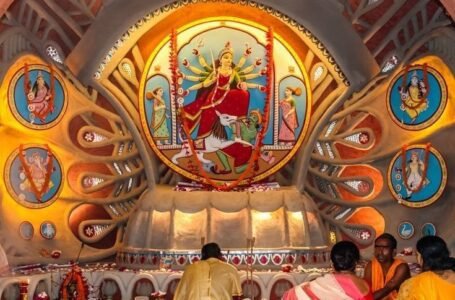Gita Govinda’s Maestro: Jayadeva’s Legacy in Verse and Song
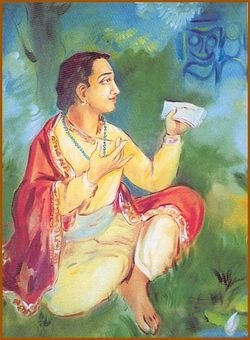
Jayadeva, born around 1170 CE in East India, stands as a luminary figure in Sanskrit poetry during the 12th century. His poetic brilliance is encapsulated in the renowned epic, Gita Govinda, a mesmerizing narrative that delves into the divine love between Krishna and Radha during the vibrant rites of spring. This opus, uniquely positing Radha’s supremacy over Krishna, holds pivotal significance within the Bhakti movement of Hinduism.
A figure shrouded in the mystique of solitude, Jayadeva was not merely a poet but also a Hindu mendicant, traversing the landscapes of eastern India. His literary legacy endures through the ages, casting a poetic spell that transcends temporal confines. Though the specifics of his life remain elusive, his impact is etched in the annals of Vaishnavism, where he is revered for his contribution to the spiritual and cultural ethos of the time.

Beyond the realms of his immediate influence, Jayadeva’s significance extends unexpectedly to Sikhism. Revered as the earliest dated author of hymns included in the Guru Granth Sahib, the principal scripture of Sikhism, his poetic resonance echoes through diverse spiritual traditions. Jayadeva’s profound verses continue to weave threads of devotion and artistic expression, a testament to the enduring enchantment of his literary legacy.
Uncertainty Surrounding Birth and Early Life
Jayadeva’s origins, veiled in the “Kindubilva” village, have sparked a birth controversy. While born into a Brahmin (or possibly Baidya) family, the precise date and location remain elusive. Scholars from Odisha, Bengal, and Mithila each assert a connection to their respective regions, proposing locations such as Kenduli Sasan in Odisha, Jaydev Kenduli in Birbhum, West Bengal, and Kenduli near Jhanjharpur in Mithila, Bihar.
Nomadic Trails and Alleged Matrimony in Puri
A wanderer by nature, Jayadeva’s journey purportedly led him to Puri, where tradition suggests a union with Padmavati, a dancer. However, this claim lacks support from early commentators and contemporary scholars. Amidst the ambiguity, his parents, Bhojadeva and Ramadevi, stand as the familial anchors in this literary voyage. Temple inscriptions unveil that Jayadeva’s poetic prowess was nurtured in Sanskrit at Kurmapataka, a scholarly enclave near Konark in Odisha. This revelation not only illuminates his educational backdrop but also underscores the cultural richness embedded in the Odishan tapestry.

Legacy in Odisha: Gita Govinda Manuscripts
Odisha emerges as the custodian of Jayadeva’s legacy, with a multitude of Gita Govinda manuscripts flourishing in various forms. This poetic masterpiece is seamlessly woven into the fabric of Odisha’s regional culture, attesting to the enduring resonance of Jayadeva’s verses in the heartland that embraced his wandering spirit. Inscriptions at the Lingaraja temple, as well as the recently discovered Madhukeswara and Simhachala temples, illuminate facets of Jayadeva’s early life. These accounts reveal his association with the school at Kurmapataka, suggesting he might have studied there and later contributed to its teaching faculty.
Scholar Thomas Donaldson highlights that the Gitagovinda gained swift recognition in Puri, evidenced by the earliest commentary penned in Odisha around 1190. The Jagannatha temple in Puri continues the tradition, ritually singing the Gita Govinda during the Badasinghara ritual—a practice established by Jayadeva himself.
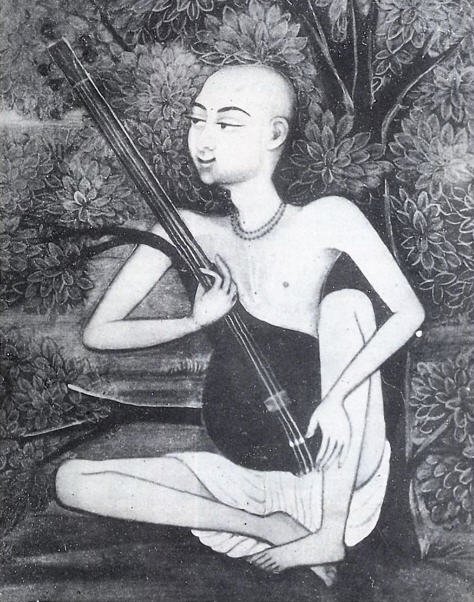
Kenduli Sasana emerges as a treasure trove of Vaishnava ruins and temples, providing fertile ground for Jayadeva’s artistic blossoming. Donaldson notes a surge in Krishna images in Odishan sculpture from the late twelfth century, predating similar trends in Bengal and other parts of India.
Ingrained Rituals and Devotion
The Gita Govinda not only found its place in temple rituals but also influenced the attire of deities during the Badasinghara Besa. The Kenduli Khandua, a special fabric adorned with verses from the Gita Govinda, showcases the integration of poetry and devotion in Odisha’s cultural practices. Odisha’s tradition extends beyond recitation, with diverse manuscript forms. Some manuscripts mimic fish or garlands made of small round palm leaf pieces, designed for portability and memorization. The Odisha State Museum houses an extensive collection, including finely illustrated versions that stand as exquisite pieces of Indian art.
Contemporary artisans and scribes in Odisha continue the time-honored tradition of crafting Gitagovinda manuscripts. Using palm leaves, these craftsmen meticulously stitch together folios, creating a visual and literary chart that unfolds to reveal the verses of the Gita Govinda, accompanied by intricate illustrations.
Jayadeva’s legacy echoes in Kendubilwa, Odisha, where an idol stands in homage to the revered poet. The enduring impact extends to traditional festivals and craftsmanship, showcasing Odisha’s dedication to preserving and celebrating Jayadeva’s cultural and literary contributions.
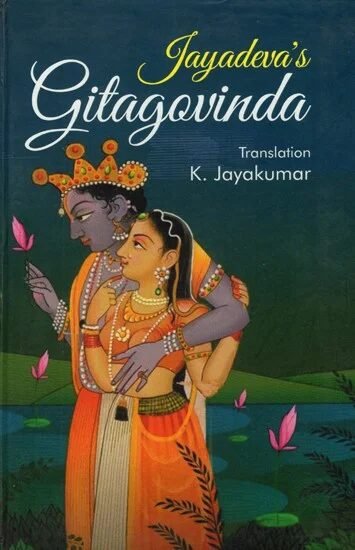
Legacy in Archival Odia Poetry
Preserving the essence of Radha-Krishna’s romance, Jayadeva’s archaic Odia poems, curated by the Directorate of Culture, Odisha, echo the sentiments of the Gita Govinda. These verses unveil a lyrical tapestry mirroring the profound themes found in his magnum opus.
Temple Tradition: Guardian of Odissi Music
Jayadeva’s artistic prowess extends to the realm of music, positioning him as one of the earliest maestros of Odissi music. The nightly rendition of the Gitagovinda during the Badasinghara ritual at the Jagannatha temple, accompanied by traditional Odissi ragas and talas like Mangala Gujjari, symbolizes an unbroken tradition dating back to Jayadeva himself.
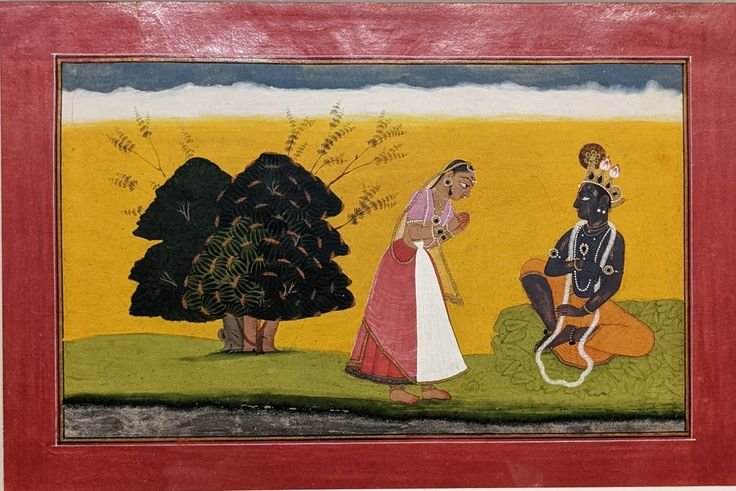
The Jagannatha temple stands as the cradle of Odissi music, nurturing and safeguarding ancient compositions, including some penned by Jayadeva. The Maharis or Devadasis, once integral to this tradition, were entrusted with the solemn duty of performing the Gitagovinda according to authentic Odissi ragas and talas. Despite their systematic eradication by the British government, the temple remains a timeless wellspring of Odissi musical heritage.
Jayadeva’s influence transcends cultural boundaries, with two of his hymns finding a revered place in the Guru Granth Sahib, the sacred scripture of Sikhism. Written in a blend of Sanskrit and eastern Apabhramsha, these hymns weave spiritual harmony, bridging linguistic and religious landscapes.
Guru Nanak’s Connection to Jayadeva’s Legacy
Records attest to Jayadeva’s profound impact on Guru Nanak during the latter’s visit to Puri. The spiritual resonance embedded in Jayadeva’s work left an indelible mark, resonating through time and space to shape the spiritual journey of the founder of Sikhism. Jayadeva’s multidimensional legacy endures, seamlessly blending poetry, music, and spirituality, enriching the cultural tapestry of Odisha and beyond.

Conclusion
Jayadeva’s contributions weave threads of poetry, music, and spirituality. His magnum opus, the Gita Govinda, stands as a testament to his poetic genius, unravelling the divine love of Radha and Krishna in rhythmic verses. Jayadeva’s archaic Odia poems, a hidden gem, echo the sentiments of his epic work, reflecting a nuanced understanding of romance and devotion.
As one of the earliest musicians of Odissi music, Jayadeva’s legacy resonates through the nightly rendition of the Gita Govinda at the Jagannatha temple, preserving ancient compositions in authentic ragas and talas. The temple, a fountainhead of Odissi music, became the guardian of this rich tradition, despite the erasure of the Devadasis by colonial forces.
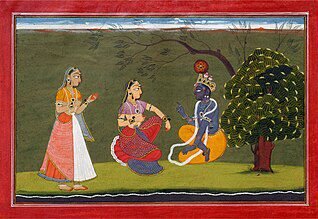
Beyond Odisha’s borders, Jayadeva’s hymns found a spiritual home in Sikhism, enshrined in the Guru Granth Sahib. His influence even touched Guru Nanak, underscoring the universal appeal of his work.
In the silence of time, Jayadeva’s verses continue to sing, echoing through temples, manuscripts, and the hearts of those touched by the enchanting melodies of devotion he 4
